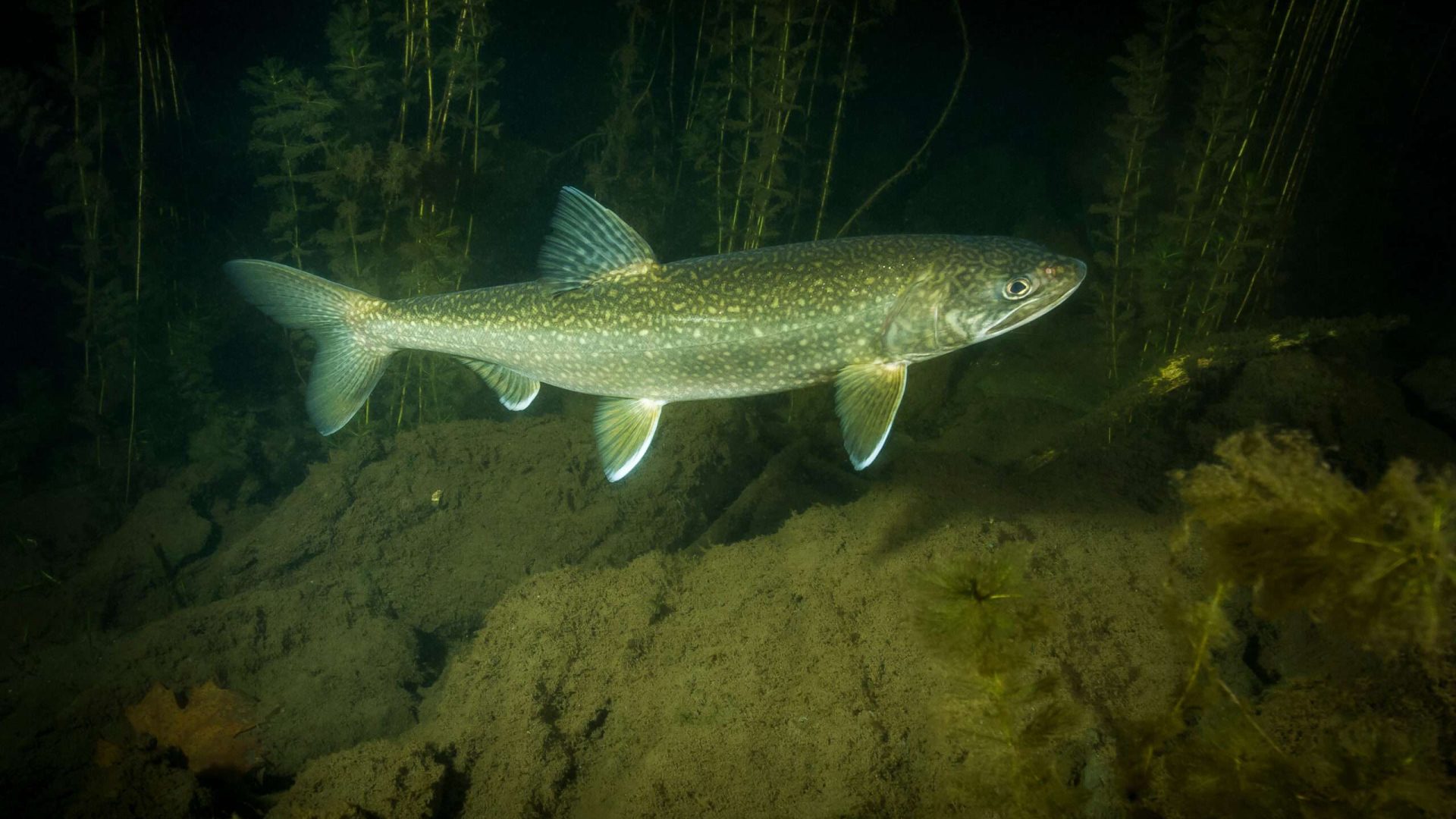Lake Trout
Scientific Name: Lake Trout Salvelinus namaycush
Toxicity Level
About The Fish
Lake Trout Salvelinus namaycush
Lake Trout salmon family Salmonidae.
Lake trout are safe to eat if they were hooked in clean water and are not too big, anything under 26 inches. Smaller lakers usually contain lower concentrations of toxic chemicals and less mercury.
Lake trout are often thought of as greasy and oily fishy smell, some consider Landlocked Salmon, browns and rainbows better to eat. Pro guides on Lake Superior explain the Lake Trout taste, color, and fat content will vary dependent on the diet of the laker. Some lakers with a clean shrimp diet will not be fatty and oily, and the color of the meat will vary dependent on diet.
Lake trout are usually only in deep lakes greater than 50 feet, but you can find them at depths well over 200 feet. Summer they will be very deep. Ice off you can catch them on the surface.
Best Time to catch Lakers are early morning or later evening. For Lake Trout, try to stay in 30 to 60 feet and close to shore. If you come across a spot and catch a trout, odds are there are more of them there.
Live bait and deep water trolling for trout with minnows is what some pros use. Artifical lures work delivered deep, in a trolling setup since they are deep.
Hybrid Trout and variants come from mixing Brown, Book, and Lake trout making Tiger and Splake Trout. Rainbows can split to steelhead trout in the great lakes or live in local rivers as rainbows.
The splake is a fertile cross between two trout, the lake trout and the brook trout. This hybridization does not occur naturally.
Tiger Trout are the result of the mixing of female brown trout and male brook trout while Splake occur when a female lake trout and a male brown trout pair.
Splake are Trout both smaller, slimmer, and darker than lake trout. Lake trout have a pointier tail fin that is more deeply forked than that of the splake
Fishing Season
Season: Trout, Salmon.
WICSONSIN
Early inland trout waters Catch and Release 5 am on the first Saturday in January to the Friday preceding the First Saturday in May at midnight
General Inland Trout Season First Saturday in May from 5:00 AM to October 15.
Trout Salmon Wisconsin Continuous except for the open season for lake trout is December 1 to September 30
Brule River (i.e., "boundary" Brule in Florence & Forest Counties) upstream from US Highway 2 Last Saturday in April to September 30
Outlying waters means Lake Superior, Lake Michigan, Green Bay, Sturgeon Bay, Sawyer's Harbor and the Fox River from its mouth up to the dam at De Pere.
MICHIGAN
Brule River (i.e., "boundary" Brule in Florence & Forest Counties) upstream from US Highway 2 Last Sat. in April - Sep. 30
WI Fishing Hook & Line Record
Wisconsin Record Lake Trout (Inland).
Weight – 35 lbs. 4 oz. Length Unknown.
Date – 06/01/1957
Location Big Green Lake Green Lake County.
———————————————
Wisconsin Record Lake Trout (Outlying).
Weight – 47 lbs. 0 oz. Length Unknown.
Date – 09/09/1946
Location Lake Superior Bayfield County.
Trout, Splake (Lake x Brook) 17 lbs. 14.5 oz. 32.0 07/06/2002 Green Bay Marinette
Outlying waters means Lake Superior, Lake Michigan, Green Bay, Sturgeon Bay, Sawyer’s Harbor and the Fox River from its mouth up to the dam at De Pere.
MI Fishing Hook & Line Record
Michigan Record Lake Trout.
Weight – 61.5 lbs. Length 49 Inches.
Date – 1997
Type – Drift Fishing Jig
Location Lake Superior.
Trout SPLAKE 17.5 34.5 2004 Spin-casting Kast Master Lake Michigan – Big Bay De Noc Delta
Michigan Hook and Line Records for Fishing
DNR Master Angler Michigan.gov Program and Map




